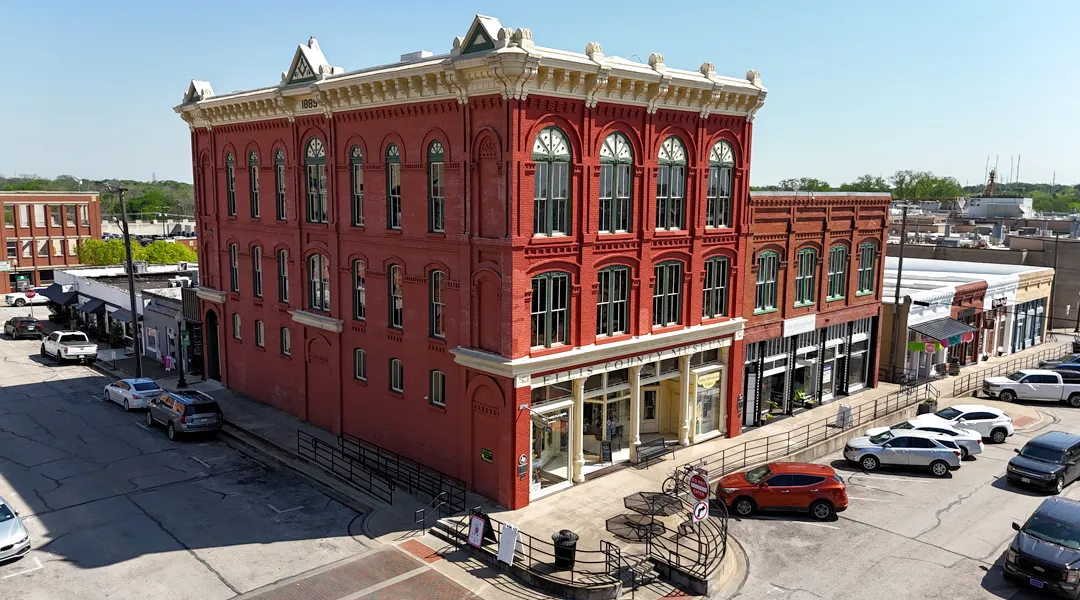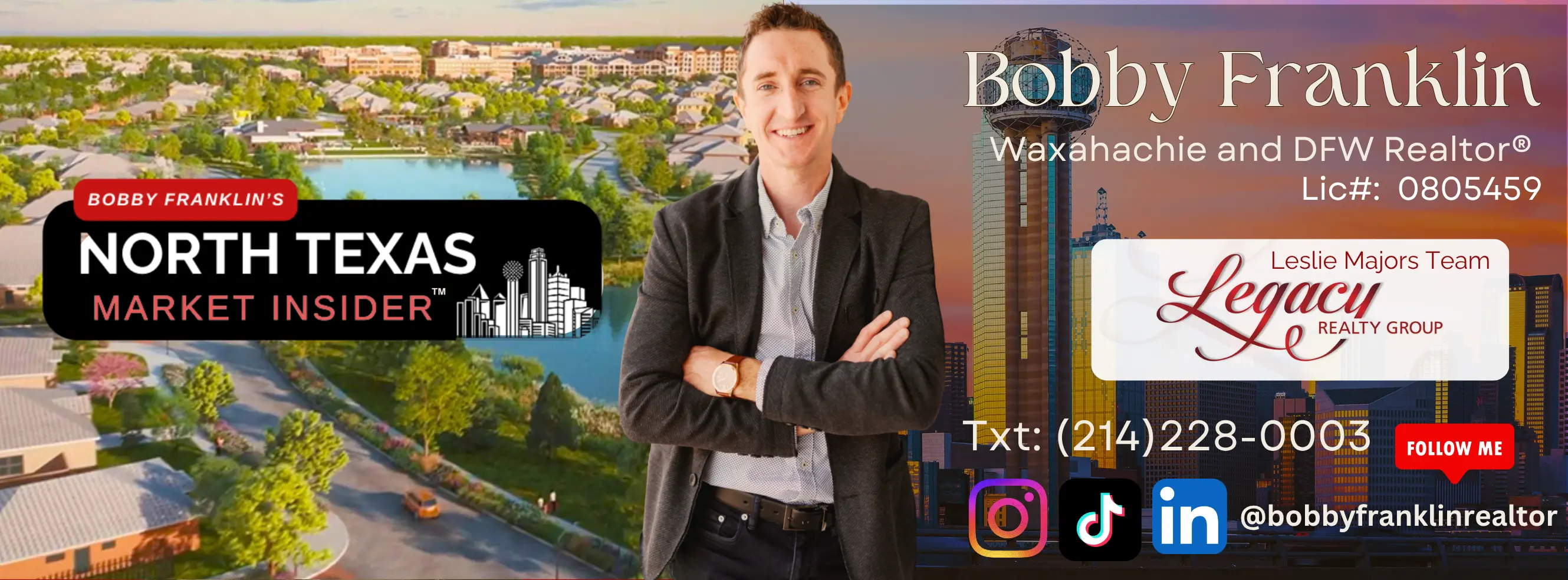Listen, when I woke up this morning and saw the Trump administration is “actively evaluating” portable mortgages, my first thought wasn’t “that’s interesting.” It was “this could be fantastic.”
Because here’s what nobody in Ellis County is talking about yet: This single policy shift could unlock the biggest inventory wave North Texas has seen in years. And while every other agent scrambles to understand what’s happening, you and I? We’re going to be the ones who saw it coming.
What the Hell Is a Portable Mortgage Anyway?

Let me break this down in plain English, because the mortgage industry loves to make simple things complicated.
A portable mortgage means exactly what it sounds like, you get to pack up your existing mortgage, your current interest rate, your remaining balance, and take it with you when you move to your next house.
Picture this scenario: You bought your home in Waxahachie back in 2021 with a 2.875% interest rate. You still owe $250,000. Now you want to move to a bigger place in Midlothian because your family’s growing. Under today’s rules? You’d have to pay off that beautiful 2.875% loan and get a new mortgage at, let’s be honest, probably around 7%.
That’s brutal. Your monthly payment on that same $250,000 goes from roughly $1,040 to $1,663. That’s an extra $623 every single month. $7,476 per year. Just for the privilege of moving.
But with a portable mortgage? You’d transfer that $250,000 balance at 2.875% to your new home. If your new place costs more, you’d either pay cash for the difference or take out a secondary loan for the gap. But that core loan, the one with the interest rate that makes financial advisors weep with joy, comes with you.
This is how mortgages work in Canada and the UK. It’s not revolutionary. It’s just revolutionary for us.
Why This Matters Right Now in North Texas
On November 12, 2025, FHFA Director Bill Pulte dropped this bomb: the administration is “actively evaluating portable mortgages” as a solution to what economists are calling the “mortgage lock-in effect.”
Here are the numbers that should make your blood pump:
Over 1.72 million home sales didn’t happen between 2022 and 2024. Not because people didn’t want to move. Not because they couldn’t afford to move. But because they couldn’t stomach trading a 3% mortgage for a 7% one.
More than half of American homeowners, HALF, have mortgage rates below 4%. Meanwhile, current rates are dancing around 7%. That’s not a market inefficiency. That’s a market paralysis.
And North Texas? We’re feeling it harder than most.
The North Texas Reality Check Nobody’s Talking About

Let me give you the current state of play in our backyard:
Dallas-Fort Worth has 29,448 active listings right now, that’s the highest we’ve seen in a decade. Sounds great for buyers, right? More inventory, more choices.
But here’s the thing: It should be even higher. We’ve got thousands of homeowners sitting on properties they’d love to sell, but they’re handcuffed to rates they’ll never see again. Median home prices in Dallas County are down 2.8% year-over-year. We’re sitting at 2.52 months of inventory supply, still technically a seller’s market, but trending fast toward equilibrium.
What happens when portable mortgages suddenly make it possible for these locked-in homeowners to move? Inventory explosion. More homes hit the market. More choices for buyers. More transactions for strategic agents who positioned themselves correctly.
This is the opportunity hiding in the chaos.
How Would This Actually Work?
Right now, in America, your mortgage is married to your house. When you sell, that mortgage gets paid off at closing. End of story. You walk away with your equity, and then you start the whole loan process from scratch for your next home.
Portable mortgages would flip that script entirely.
Here’s what it would likely look like:
1. You decide to move. You put your current home on the market.
2. You find your next property. This usually needs to happen within a specific window, in Canada and the UK, it’s typically 30 to 120 days.
3. Your lender requalifies you. They’re going to make sure you can still afford the mortgage based on your current income, credit, and the new property value. This isn’t automatic, you need to prove you’re still creditworthy.
4. The new home gets appraised. Loan-to-value ratios still matter. If you’re porting $250,000 to a $400,000 house, that’s fine. If you’re trying to port it to a $260,000 house, you might need to adjust.
5. You cover the difference. If your new home costs more than what you owe, you either pay cash for the gap or take out a second mortgage. Some lenders might offer a “blended rate” option where your ported balance keeps its low rate and the additional amount comes at current market rates.
6. You move with your low rate intact. While your neighbors are signing 7% mortgages, you’re sitting pretty at 3%.
The Payment Breakdown: Old Way vs. New Way

Without Portable Mortgages:
New mortgage: $400,000 at 7.0%
- Principal & Interest: $2,661/month
- Property taxes: $400/month
- Homeowners insurance: $150/month
- HOA: $200/month
- Total payment: $3,411/month
With Portable Mortgages:
Mortgage #1 (ported): $200,000 at 2.875%
- Principal & Interest: $829/month
Mortgage #2 (new): $128,000 at 7.0%
- Principal & Interest: $851/month
Combined P&I: $1,680/month
Add escrow: +$750/month (taxes, insurance, HOA)
Total payment: $2,430/month
The Comparison:
- Old way: $3,411/month total
- New way: $2,430/month total
- Monthly savings: $981
- Annual savings: $11,772
- 30-year savings: Approximately $353,000
Why the Jump is So Dramatic
The jump from $829 to $2,661 in JUST principal and interest makes perfect sense when you break it down:
- $829 is the payment on $200,000 at 2.875%
- $2,661 is the payment on $400,000 at 7.0%
You’re literally more than doubling your loan amount ($200k to $400k) AND more than doubling your interest rate (2.875% to 7%), so yeah, the payment triples.
That’s the brutal reality of today’s market that’s keeping people locked in.
What About Right Now? Can You Do This Today?

Short answer: Not for most people.
For conventional loans, which most Americans have, portability isn’t an option. Your mortgage has what’s called a “due-on-sale clause” that requires full payoff when you sell.
The one exception worth knowing about: assumable mortgages.
If you have an FHA loan, VA loan, or USDA loan, those mortgages can sometimes be assumed by your buyer. Meaning when you sell, the buyer can take over your existing loan, your rate, your terms, your remaining balance.
But here’s the catch: They need to qualify with the lender, and they need to come up with cash or a second mortgage to cover your equity. If you bought a house for $300,000 with a VA loan at 2.5% and you now owe $200,000, but the house is worth $400,000? Your buyer needs to find $200,000 in cash or financing to buy you out.
Assumable mortgages are rare and most buyers don’t even know to look for them. But if you’re selling and you have one? That’s a massive selling point right now.
Wait….Would My Current Mortgage Be Eligible?
Here’s a critical question: If portable mortgages become law TODAY (November 2025), your EXISTING mortgage that you took out in 2021 won’t automatically become portable just because the law changed.
HOWEVER: Here’s where it gets interesting and why this STILL helps people move.
Two Scenarios:
Scenario 1: You Already Have a Low-Rate Mortgage
- You got your 2.875% mortgage in 2021
- Portable mortgage law passes in 2026
- Your current loan probably won’t be portable (it was originated before the law)
- BUT: You could potentially refinance your existing mortgage into a NEW portable mortgage product
If rates are still at 7% when you refinance, you probably wouldn’t do this. BUT if rates drop to, say, 5% and portable mortgages exist, you might refinance from 2.875% to 5% specifically to GET the portability feature. You’d pay slightly more interest, but you’d gain the freedom to move.
Scenario 2: You’re Buying NOW or in the Future
- Anyone taking out a NEW mortgage after the law passes would get a portable mortgage
- This helps future buyers who won’t be trapped like current homeowners are
- It prevents the NEXT lock-in crisis from happening
Why This Still Unlocks Inventory:
Even if existing low-rate mortgages aren’t automatically portable, people who are currently locked in might decide:
“Okay, I’m paying 2.875% and I’d have to get 7% if I move. That sucks. BUT with portable mortgages existing, at least if I buy now at 7%, I can move AGAIN in 5 years without getting trapped again. So let me just take the hit NOW and get into a portable mortgage, knowing I’ll have flexibility forever.”
The bigger impact: This fixes the problem going FORWARD so we don’t end up in this mess again in 2030.
Could They Make Existing Mortgages Eligible?
Absolutely. And honestly, that would make the most sense. The administration could structure this in several ways:
Option 1: New Loans Only (Most Conservative)
- Only mortgages originated AFTER the law passes are portable
- Existing mortgages stay as-is
- This is the “safest” approach but doesn’t solve the current lock-in crisis
Option 2: All Conforming Loans Become Portable (Game Changer)
- Any mortgage backed by Fannie Mae or Freddie Mac automatically becomes portable
- Since FHFA (Federal Housing Finance Agency) oversees Fannie and Freddie, they could mandate this
- This would instantly make MILLIONS of existing mortgages portable
- This would be HUGE—it would immediately unlock the entire locked-in inventory
Option 3: Opt-In Conversion
- Homeowners with existing mortgages could apply to convert their loan to a portable mortgage
- Might require minimal underwriting/requalification
- Small fee to make the conversion
- Voluntary but available to everyone
Option 4: Grandfather Period
- All mortgages originated within the last X years (say, 5 or 10 years) automatically become portable
- Older mortgages would need to refinance or convert
Which is Most Likely?
If the Trump administration is serious about fixing the lock-in effect RIGHT NOW, they’d probably go with Option 2 or 3.
Why?
- FHFA has the authority – Since Director Pulte is already “actively evaluating” this, he could mandate that Fannie and Freddie allow portability on loans they back
- It solves the immediate problem – Millions of homeowners with 3-4% rates could suddenly move without penalty
- Maximum market impact – You’d see inventory flood the market within months, not years
The political incentive: Trump wants to be able to say “I fixed the housing market.” Making only NEW loans portable doesn’t give him that win in his term. Making EXISTING loans portable creates an immediate, visible impact.
What This Would Mean for North Texas
If they make existing mortgages portable, you’d see:
- Immediate inventory surge – Homeowners who’ve been sitting on the sidelines for 2-3 years suddenly list
- Increased transaction volume – More moves = more closings = more business for strategic agents
- Market normalization – People can finally make life decisions based on what’s right for their family, not what’s right for their interest rate
The opportunity: The agents who understand this BEFORE the announcement and have already educated their sphere? They’re the ones who get the calls when it happens.
That’s why I’m tracking this so closely. And that’s why you should be too.
What This Means for Sellers in Ellis County

If portable mortgages become reality, we’re looking at a seismic shift.
Suddenly, that homeowner in Red Oak who’s been sitting on a 3.125% mortgage since 2020? They can move to a bigger house in Midlothian without destroying their financial life. That young couple in Ennis who need more space for kids? They’re not trapped anymore.
The dam breaks.
More inventory floods the market. That’s good for buyers, more choices, less competition, better negotiating power. But it also means if you’re a seller, you need to be strategic. A wave of new listings means you can’t just slap a sign in the yard and expect multiple offers.
You need pricing discipline. You need marketing sophistication. You need an agent who understands the game is changing.
What This Means for Buyers
Right now, November 2025, we’re in a weird transitional moment in North Texas.
Inventory is up. Prices are softening slightly. Days on market are increasing. Sellers are offering concessions they wouldn’t have dreamed of two years ago.
And buyers are asking me: “Should I wait? Should I see if rates drop? Should I see if portable mortgages actually happen?”
Here’s my answer: Hell no.
Why?
First, waiting for rates to drop is a losing strategy. When rates fall, demand surges. More buyers flood back into the market. Prices get bid up. That lower interest rate gets eaten alive by higher purchase prices. You save $200 on your monthly payment but paid $30,000 more for the house. Congratulations, you played yourself.
Second, portable mortgages may not be retroactive. If and when this policy gets implemented, it could only apply to new loans originated after the policy takes effect. So waiting doesn’t necessarily get you portability on a loan you haven’t taken out yet.
Third, and most importantly: North Texas is a buyer’s market RIGHT NOW. You have leverage. You have choices. You can negotiate. When portable mortgages unlock inventory and bring more buyers back into the game, that leverage disappears.
Buy now. Lock in value while you can. And if rates drop later? Refinance. You’re not married to your mortgage forever.
The Closest Thing to Portability We Have Today

Since we can’t port conventional mortgages right now, let’s talk about the next best thing: assumable mortgages.
An assumable mortgage means the buyer takes over the seller’s existing loan, same rate, same terms, same remaining balance. The buyer has to qualify with the lender, and they have to come up with the cash or financing to cover the seller’s equity.
These exist almost exclusively with government-backed loans:
- FHA loans: Can be assumed if the buyer qualifies.
- VA loans: Can be assumed, even by non-veterans in most cases.
- USDA loans: Can be assumed with lender approval.
Conventional loans? Almost never assumable.
If you’re selling a house with an assumable loan in the 2-4% range right now, you’re sitting on a golden ticket. Market it. Advertise it. Make it the centerpiece of your listing. There are buyers out there who would kill for a 3% mortgage.
Will Portable Mortgages Actually Fix the Problem?
Honestly? Maybe.
Research suggests portable mortgages could ease the lock-in effect and increase labor mobility, people being able to move for better jobs without getting financially penalized.
But there are legitimate concerns:
Complexity: The mortgage market would need significant infrastructure changes. Lenders, servicers, and the secondary market (where mortgages get bought and sold) would need to adapt.
Pricing: Would portable mortgages trade at a discount in the secondary market compared to new-issue mortgages? If so, lenders might charge higher rates upfront to compensate.
Moral hazard: Would people trade up more frequently if they could keep their low rates? Would that create instability?
These are real questions. But you know what? They’re solvable. Canada and the UK figured it out. We can too.
Should You Make Your Move Now?

Here’s the bottom line:
If you’re a seller with a low-rate mortgage and you’ve been on the fence about moving, start getting your ducks in a row. Whether portable mortgages happen or not, understanding your options, including whether your loan is assumable, gives you strategic flexibility.
If you’re a buyer, stop waiting for the perfect moment. The perfect moment is a myth. The market we have right now, high inventory, motivated sellers, negotiating room, this is about as good as it gets. Lock in value. You can always refinance if rates drop.
And if you’re an agent who’s still thinking in 2019 terms, wake up. The game is changing. Fast. The agents who dominate in 2026 and beyond won’t be the ones with the biggest teams or the most billboards. They’ll be the ones who understood the market shift before it happened.
Be five steps ahead. See around corners. Turn chaos into opportunity.
That’s the playbook. That’s how you win.
if you think you’re ready to move schedule a listing appointment or a buyer consultation today!
Want to talk strategy? Have questions about your specific situation? Let’s connect.
📊 Your North Texas market intel source
🎯 Text 214-228-0003 for insider updates
Bobby Franklin – REALTOR®
Legacy Realty Group – Leslie Majors Team
Serving Ellis County & DFW






Join The Discussion